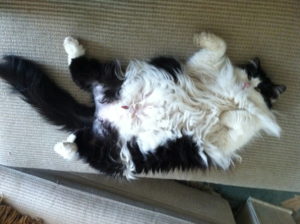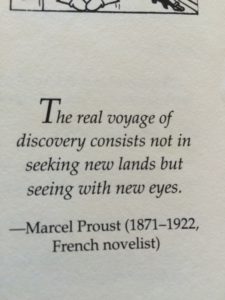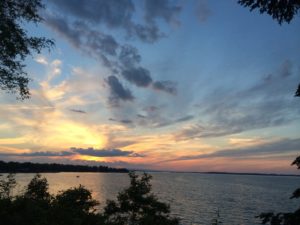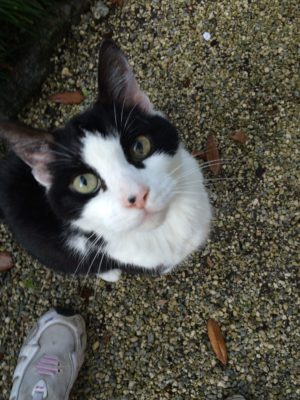
“Curiousity killed the cat!” begins an old sing-song taunt tossed about when I was a child. It was meant to shame or deter someone who had poked their nose where it wasn’t — according to someone or something — supposed to be. The usual retort was “Satisfaction brought him back!” often accompanied by a final “Hmph!” and perhaps an appropriate sound effect.
I find it interesting that curiosity was discouraged. For me, that curiosity is the very basis, the seed of the desire to learn. It is the puzzle, the mystery to be solved, the great unknown leading us forward…
The asset of being curious…
What part does a curious nature have to do with the pursuit of formal education? Education is passing along to upcoming minds that which is already known. As we progress through the educative process, it can be augmented with the research process: “What’s next? What does this lead to/infer/prove?” And this is usually only entered into by those with the “I am curious” gene. So, while formal learning is most definitely lubricated by curiosity, a desire to know, it is really quite different from curiousity itself. And curiosity is nurtured and fed by triggers too often absent in a schoolroom.
So here’s what the curiosity cycle might look like as a child, we are full of wonder and curiosity; it is all about learning: there is a whole new world to discover. Then the teenager becomes know it all, having settled on his/her opinions and justifiably needing to feel independent and in charge. Next, we humans tend to embark on the busy work of creating, managing, and controlling; the productive years. This can be a very long cycle; some people never leave it — dying “in the saddle,” as that saying goes. We carve out our lives, might get into our routines, and some might negatively say “ruts.” I find stability very good for fostering creativity.

But as age and the longer perspective all those years gift us with, sometimes we begin seeing over the edges of our respective ruts once again, discovering anew. We get curious again about things that may once have been taken for granted, thought we understood, had forgotten, or didn’t have time to notice, care about, or pursue.
For me, some of these are birds, clouds in the sky, shamanism, science stuff like physics — which I always assumed was way over my head — and just the beauty of everyday sunlight, the Isness; that incredible beauty everywhere. I find I am curious about a great many things.
I am grateful for the time and wherewithal to indulge my curiosity and despair only of my inherent laziness that stops me and says: “Let’s just sit and read a book now.”

Well, that’s not so bad either.
To be curious is an asset, not some annoying stick-yer-nose-innit bad habit. It is the foundational block for life-long learning. That old saying about the cat should be banned!
P.S. You may have noticed that I am using what is now referred to as the “British spelling” of the word curiousity, with a second ‘u.’ That’s how I was taught it was spelled. I mean, without the -ity on the end, it is curious, correct? Spell check is always trying to make it “curiosity” — which just looks weird and mis-spelled to me. I don’t understand the fashion for changing the root word spelling when adding ‘ity’. Why do that? Just curious…

P.P.S. Oh, and in case you were wondering or worried, the cat in the uppermost left-hand picture isn’t dead at all; she likes to lie around like that.

